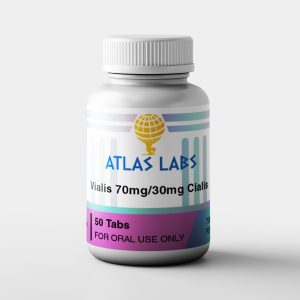HGH, or human growth hormone, is a naturally occurring substance produced by the pituitary gland. It plays a central role in growth, cell regeneration, and tissue repair. HGH levels peak during adolescence and gradually decline with age, leading some to explore HGH therapy to counteract aging, build muscle, or recover more quickly from training. While it is medically prescribed for certain hormone deficiencies and chronic illnesses, its use in bodybuilding is largely off-label and carries legal as well as medical risks.
The Rise of HGH Use in Fitness Culture
Although originally developed to treat specific medical conditions, HGH quickly caught the attention of bodybuilders and athletes looking to push their performance to the next level. Unlike anabolic steroids, which primarily promote muscle growth by mimicking testosterone, HGH supports tissue repair and metabolic function. This makes it particularly appealing to those who struggle with stubborn fat or who want to speed up recovery between workouts.
Some athletes also believe that HGH can help slow the aging process or enhance overall vitality. While it’s true that HGH can improve lean body mass and potentially boost energy levels, the scientific community remains cautious about its non-medical use. The benefits—especially in healthy adults—tend to be modest and highly individual, while the risks can be significant.
HGH Therapy and Growth Hormone Deficiency
For individuals with medically diagnosed HGH deficiency, hormone therapy can offer substantial health benefits. Patients often report improved energy, better sleep, enhanced cognitive function, and an increase in muscle mass and bone density. These treatments are prescribed by endocrinologists after thorough blood tests and ongoing hormone monitoring. HGH is approved by the FDA and other regulatory bodies for conditions such as Turner syndrome, chronic kidney disease, and AIDS-related muscle wasting.
However, simply feeling fatigued, gaining weight, or struggling in the gym doesn’t necessarily indicate a hormone deficiency. True growth hormone deficiency is a medical condition and must be properly diagnosed by a qualified professional. Symptoms may include increased fat accumulation around the midsection, difficulty maintaining muscle mass, reduced bone strength, and emotional symptoms such as anxiety or depression.
HGH in the Gym: Does It Work?
Many gym-goers turn to HGH in hopes of seeing rapid gains in muscle size or shedding stubborn fat. While some studies suggest that HGH can improve lean body mass, the majority of that increase is attributed to water retention, not new muscle fibers. Furthermore, HGH alone does not dramatically improve strength or physical performance, and the effects are less potent than what can be achieved with anabolic steroids.
Athletes who combine HGH with other PEDs, like testosterone or anabolic steroids, often report more significant transformations, but this also increases the risk of side effects. Without medical supervision, this kind of stacking can strain the liver, disrupt hormone balance, and lead to long-term endocrine issues.
Best Practices: Supervised Use and Lifestyle Support
If you are medically eligible for HGH therapy, it’s essential to work with a licensed professional who can offer structured treatment. A qualified practitioner will assess your health through blood work, discuss your goals, and design a personalised plan that includes regular follow-up testing.
Lifestyle also plays a major role in how well HGH therapy works. A high-protein, whole-food diet helps maximise the effects of hormone treatments. Regular exercise, especially resistance training, further supports muscle development and fat reduction. Prioritising sleep and stress management is also critical, as these factors naturally influence your body’s growth hormone production.
Injection Tips and Practical Considerations
For those prescribed HGH, self-injection is often part of the process. While this might sound intimidating at first, it’s typically a simple routine with proper guidance. Injections are most effective when administered just before bed, aligning with the body’s natural growth hormone cycle. Rotating injection sites, such as the back of the arms, outer thighs, or abdomen helps reduce irritation. HGH must be refrigerated and handled carefully to maintain its potency.
Cycling is another common strategy among HGH users, where treatment is taken for a few months followed by a rest period. Some individuals incorporate post-cycle therapy (PCT) to restore natural hormone production and reduce side effects like fatigue, libido loss, or mood changes.
Final Thoughts: Weighing the Risks and Rewards
Human growth hormone therapy can offer real benefits for people with legitimate medical needs. However, its use in bodybuilding remains controversial. The potential gains, leaner physique, enhanced recovery must be weighed against very real health risks, particularly when used without supervision or in combination with other substances.
The information provided in this article is intended for educational and research purposes only. It does not constitute medical advice or a recommendation to use any substances discussed. Always consult with a licensed medical professional before beginning any supplement, peptide, or anabolic steroid protocol.
If you’re interested in exploring high-quality research compounds, you can browse our shop here.
